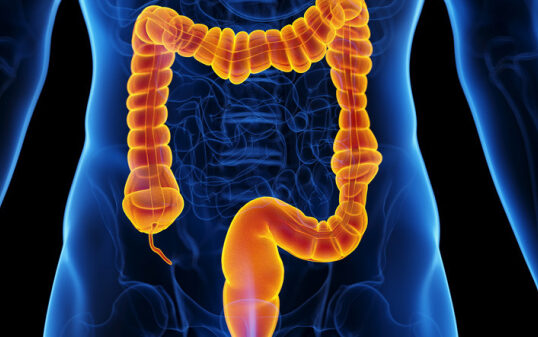

Don’t worry. It’s good advice if you can take it. Of course that’s not always easy, especially for health concerns.
The truth is: it’s impossible (and ill-advised) to never worry about your health. But are you worrying about the right things? Let’s compare a sampling of common worries to the most common conditions that actually shorten lives. Then we can think about preventing the biggest health threats.
Dangerous but rare health threats
The comedian John Mulaney says the cartoons he watched as a child gave him the impression that quicksand, anvils falling from the sky, and lit sticks of dynamite represented major health risks. For him (as is true for most of us), none of these turned out to be worth worrying about.
While harm can befall us in many ways, some of our worries are not very likely to occur:
- Harm by lightning: In the US, lightning strikes kill about 25 people each year. Annually, the risk for the average person less than one in a million. There are also several hundred injuries due to nonfatal lightning strikes. Even though lightning strikes the earth millions of times each year, the chances you’ll be struck are quite low.
- Dying in a plane crash: The yearly risk of being killed in a plane crash for the average American is about one in 11 million. Of course, the risk is even lower if you never fly, and higher if you regularly fly on small planes in bad weather with inexperienced pilots. By comparison, the average yearly risk of dying in a car accident is approximately 1 in 5,000.
- Snakebite injuries and deaths: According to the Centers for Disease Control and Prevention, an estimated 7,000 to 8,000 people are bit by poisonous snakes each year in the US. Lasting injuries are uncommon, and deaths are quite rare (about five per year). In parts of the country where no poisonous snakes live, the risk is essentially zero.
- Shark attacks: As long as people aren’t initiating contact with sharks, attacks are fairly uncommon. Worldwide, about 70 unprovoked shark attacks occur in an average year, six of which are fatal. In 2022, 41 attacks occurred in the US, two of which were fatal.
- Public toilet seats: They may appear unclean (or even filthy), but they pose little or no health risk to the average person. While it’s reasonable to clean off the seat and line it with paper before touching down, health fears should not discourage you from using a public toilet.
I’m not suggesting that these pose no danger, especially if you’re in situations of increased risk. If you’re on a beach where sharks have been sighted and seals are nearby, it’s best not to swim there. When in doubt, it’s a good idea to apply common sense and err on the side of safety.
What do Google and TikTok tell us about health concerns?
Analyzing online search topics can tell us a lot about our health worries.
The top Google health searches in 2023 were:
- How long is strep throat contagious?
- How contagious is strep throat?
- How to lower cholesterol?
- What helps with bloating?
- What causes low blood pressure?
Really? Cancer, heart disease and stroke, or COVID didn’t reach the top five? High blood pressure didn’t make the list, but low blood pressure did?
Meanwhile, on TikTok the most common topics searched were exercise, diet, and sexual health, according to one study. Again, no top-of-the-list searches on the most common and deadly diseases.
How do our worries compare with the top causes of death?
In the US, these five conditions took the greatest number of lives in 2022:
- heart disease
- cancer
- unintentional injury (including motor vehicle accidents, drug overdoses, and falls)
- COVID-19
- stroke.
This list varies by age. For example, guns are the leading cause of death among children and teenagers (ages 1 to 19). For older teens (ages 15 to 19), the top three causes of death were accidents, homicide, and suicide.
Perhaps the lack of overlap between leading causes of death and most common online health-related searches isn’t surprising. Younger folks drive more searches and may not have heart disease, cancer, or stroke at top of mind. In addition, online searches might reflect day-to-day concerns (how soon can my child return to school after having strep throat?) rather than long-term conditions, such as heart disease or cancer. And death may not be the most immediate health outcome of interest.
But the disconnect suggests to me that we may be worrying about the wrong things — and focusing too little on the biggest health threats.
Transforming worry into action
Most of us can safely worry less about catching something from a toilet seat or shark attacks. Instead, take steps to reduce the risks you face from our biggest health threats. Chipping away at these five goals could help you live longer and better while easing unnecessary worry:
- Choose a heart-healthy diet.
- Get routinely recommended health care, including blood pressure checks and cancer screens, such as screening for colorectal cancer.
- Drive more safely. Obey the speed limit, drive defensively, always wear a seatbelt, and don’t drive if you’ve been drinking.
- Don’t smoke. If you need to quit, find help.
- Get regular exercise.
The bottom line
Try not to focus too much on health risks that are unlikely to affect you. Instead, think about common causes of poor health. Then take measures to reduce your risk. Moving more and adding healthy foods to your meals is a great start.
And in case you’re curious, the average number of annual deaths due to quicksand is zero in the US. Still a bit worried? Fine, here’s a video that shows you how to save yourself from quicksand even though you’ll almost certainly never need it.
About the Author

Robert H. Shmerling, MD, Senior Faculty Editor, Harvard Health Publishing; Editorial Advisory Board Member, Harvard Health Publishing
Dr. Robert H. Shmerling is the former clinical chief of the division of rheumatology at Beth Israel Deaconess Medical Center (BIDMC), and is a current member of the corresponding faculty in medicine at Harvard Medical School. … See Full Bio View all posts by Robert H. Shmerling, MD





